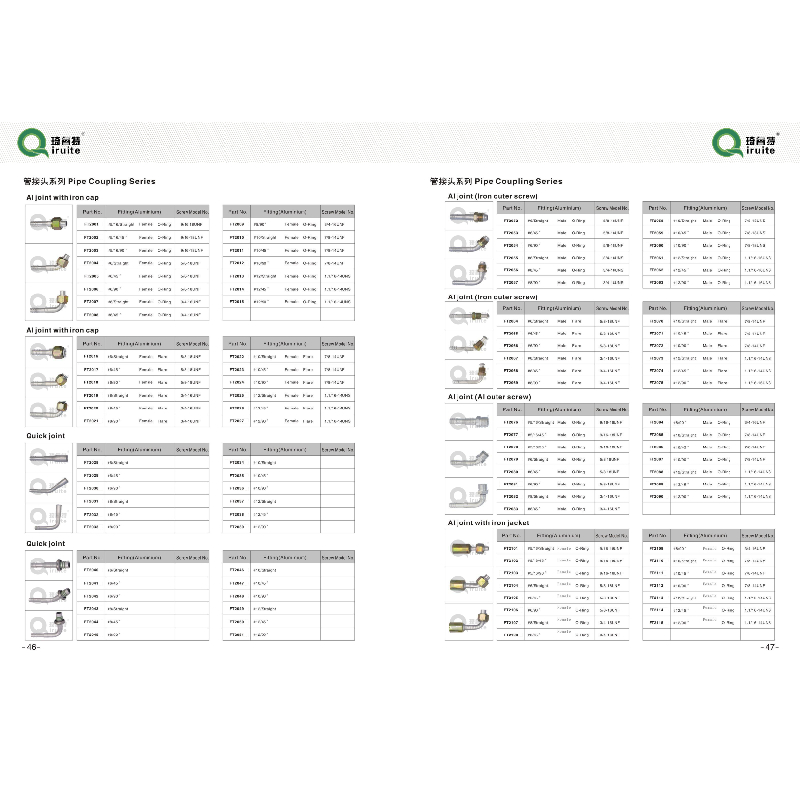Understanding the Importance and Functionality of Hose Couplers in Fluid Transfer Systems
Understanding Hose Couplers Key Components for Fluid Management
Hose couplers play a crucial role in the effective management of fluids across various industries, including agriculture, construction, automotive, and more. These connectors facilitate the joining of hoses, enabling the safe and efficient transfer of liquids and gases. In this article, we will explore the significance, types, applications, and maintenance of hose couplers.
What Are Hose Couplers?
Hose couplers are fittings that connect hoses to other hoses or to pieces of equipment, such as pumps, valves, or hoses. They are designed to allow for quick connect and disconnect functionality, enabling operators to set up and dismantle systems efficiently. Hose couplers can vary in size, material, and design, depending on the application and the type of fluid being transported.
Types of Hose Couplers
There are several different types of hose couplers, each with their own advantages
1. Cam Lock Couplers Also known as cam and groove couplings, these are widely used due to their fast connection and disconnection. They are secured using a lever mechanism and are ideal for agricultural and industrial applications.
2. NPT Couplers National Pipe Thread (NPT) couplers feature threaded ends for secure connections. They are commonly used in plumbing and gas applications where a tight seal is critical.
3. Barbed Couplers Barbed couplers feature ridges that grip onto the inside of the hose, providing a strong and secure connection. They are often used in garden and irrigation applications.
4. Quick Disconnect Couplers These couplers allow for swift connection and disconnection with minimal effort. They are frequently utilized in hydraulic systems, where efficiency is vital.
5. Push-to-Connect Couplers These couplers offer a simple mechanism where the hose can be pushed to connect to the fitting. They are common in pneumatic applications due to their ease of use.
hose coupler

Applications of Hose Couplers
Hose couplers find applications across various sectors due to their versatility. In agriculture, they are used to connect irrigation hoses, ensuring efficient water delivery to crops. In construction, hose couplers facilitate the movement of concrete, water, and other materials. The automotive industry utilizes hose couplers in fuel delivery and cooling systems, ensuring safe and reliable performance. Furthermore, these couplers are integral in hydraulic systems, where the precise transmission of power is required for machinery to function.
Maintenance of Hose Couplers
Proper maintenance of hose couplers is essential to ensure longevity and functionality. Here are some tips for maintaining couplers
- Regular Inspection Periodically check couplers for signs of wear and tear, including cracks, leaks, or corrosion. Early identification of issues can prevent further damage.
- Cleaning Ensure that couplers and hoses are clean before connecting. Debris can compromise the integrity of the seal.
- Proper Storage When not in use, store hoses and couplers properly to prevent exposure to harsh environmental conditions.
- Replacement Follow manufacturer recommendations for the replacement of worn or damaged couplers to maintain system integrity and safety.
Conclusion
Hose couplers are indispensable components in fluid management systems, enabling the safe and efficient transport of liquids and gases across various industries. Understanding the types and applications of hose couplers, along with regular maintenance practices, can lead to improved performance and safety in operations. As industries continue to evolve, the significance of these vital connectors will only grow, emphasizing the need for quality and reliability in all fluid handling solutions.
-
Ultimate Spiral Protection for Hoses & CablesNewsJun.26,2025
-
The Ultimate Quick-Connect Solutions for Every NeedNewsJun.26,2025
-
SAE J1401 Brake Hose: Reliable Choice for Safe BrakingNewsJun.26,2025
-
Reliable J2064 A/C Hoses for Real-World Cooling NeedsNewsJun.26,2025
-
Heavy-Duty Sewer Jetting Hoses Built to LastNewsJun.26,2025
-
Fix Power Steering Tube Leaks Fast – Durable & Affordable SolutionNewsJun.26,2025

